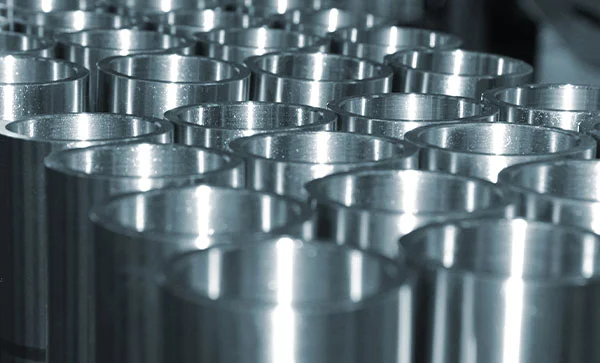Shandong Qilu lndustrial Co.,Ltd.
How Drop Forging Products Revolutionize Manufacturing Efficiency
Introduction

In the realm of manufacturing, efficiency is paramount. One method that has significantly contributed to revolutionizing manufacturing efficiency is drop forging. This age-old technique has been refined over centuries, evolving into a sophisticated process that yields high-quality products with remarkable efficiency. In this blog post, we delve into how drop forging products have transformed manufacturing operations, enhancing productivity, quality, and cost-effectiveness.
Understanding Drop Forging
Drop forging is a metalworking process wherein metal is shaped by hammering or pressing it into a die. The metal is heated to a specific temperature to make it more malleable, allowing for precise shaping. This method is particularly advantageous for producing complex shapes with tight tolerances, making it ideal for a wide range of industries, including automotive, aerospace, and construction.
Applications Across Industries
Drop forging finds applications across various industries, each benefiting from its unique advantages. Let’s explore some key sectors where drop forging products have made a significant impact:
Automotive Industry
In the automotive sector, components such as crankshafts, connecting rods, and gears are often manufactured through drop forging. These parts require high strength and precision, making drop forging the preferred method for their production. By utilizing drop forging, automotive manufacturers can ensure the reliability and performance of their vehicles while streamlining production processes.
Aerospace Sector
Precision and reliability are paramount in the aerospace industry, where safety is non-negotiable. Drop forging is extensively used to produce critical components such as turbine blades, landing gear, and structural fittings. The exceptional strength and dimensional accuracy achieved through drop forging are indispensable for meeting the stringent requirements of aerospace applications.
Construction and Infrastructure
In the construction sector, where heavy-duty equipment and structural components are essential, drop forging plays a crucial role. Components like crane hooks, anchor bolts, and structural connectors require the strength and durability that drop forging provides. By utilizing drop forging products, construction companies can ensure the safety and integrity of their structures while optimizing construction timelines.
Innovations in Drop Forging Technology
The evolution of drop forging technology has been driven by innovations aimed at enhancing efficiency, precision, and sustainability. Advancements such as computer-aided design (CAD), simulation software, and automated forging processes have revolutionized the way drop forging products are manufactured. These technologies enable manufacturers to optimize designs, minimize material waste, and streamline production workflows, resulting in further improvements in efficiency and cost-effectiveness.
Advantages of Drop Forging Products

| Advantage | Description |
|---|---|
| Superior Strength | Drop forging results in products with exceptional strength and durability, crucial for demanding applications. |
| Enhanced Material Properties | The controlled deformation process improves material properties, such as grain structure and mechanical properties. |
| Cost-Effectiveness | Despite initial setup costs, drop forging offers long-term cost savings through reduced material waste and lower production costs. |
| Design Flexibility | Complex shapes can be achieved with precision, providing designers with greater flexibility in product design. |
Conclusion
The adoption of drop forging products has indeed revolutionized manufacturing efficiency across various industries. From automotive to aerospace, and construction to consumer goods, the benefits of drop forging are undeniable. By leveraging the superior strength, precision, and cost-effectiveness offered by drop forging, manufacturers can stay competitive in today’s demanding market landscape. As technology continues to advance, we can expect further enhancements in drop forging processes, driving even greater efficiencies and innovations in manufacturing.
FAQ
Q: What materials are commonly used in drop forging?
A: While a wide range of metals can be drop forged, common materials include steel, aluminum, and titanium.
Q: How does drop forging products compare to other manufacturing methods?
A: Drop forging products offers advantages such as superior strength, enhanced material properties, and cost-effectiveness compared to methods like casting or machining.
Q: Is drop forging suitable for small-scale production?
A: While drop forging is often associated with mass production, it can also be adapted for small-scale production runs, providing benefits such as high precision and consistency.
